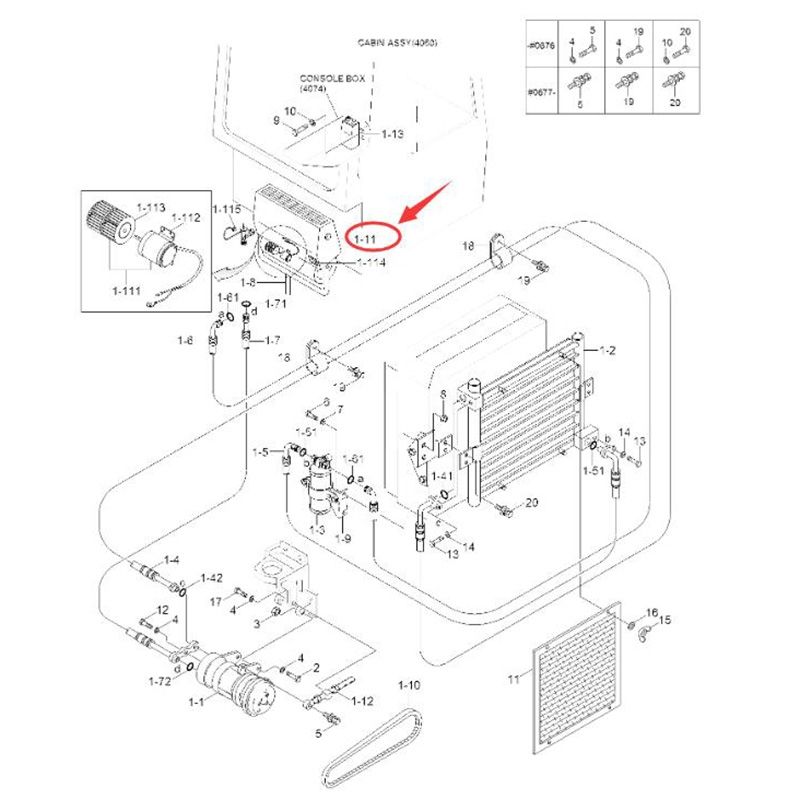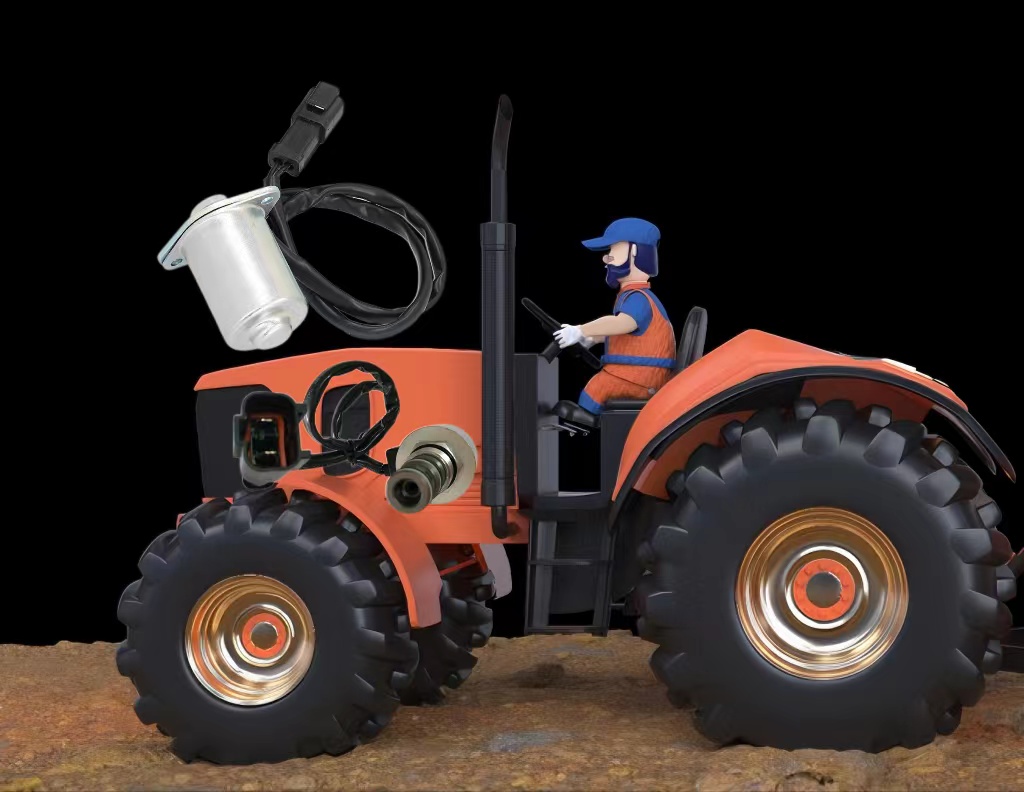1.What is an evaporative air conditioner?
The A/C (air conditioning) evaporator is composed of two specific parts, the core and the coil, and is one of the important parts of the air-conditioning system of construction machinery. Its main function is to cool and dehumidify the air entering the compartment. By removing heat and moisture from the air, it regulates the temperature and humidity in the cabin, providing a comfortable working environment inside the cabin.
2.What does an a/a evaporator do?
An A/C evaporator is a part of the air conditioning system that cools the air by absorbing and removing heat. It is located in the dashboard and contains refrigerant that was cooled down by the compressor. Warm air is blown through the evaporator coils, where the refrigerant changes from liquid to vapor and collects the heat from the air. The cold air is then circulated through the cabin.
3.What are the symptoms of a bad A/C evaporator?
- Leakage: In most cases when there is a problem with the evaporator it is due to a leak developing between the wick and the coil. Since AC evaporators require constant pressure to effectively dissipate heat, leaks are often the leading cause of failure. Therefore, when a major AC evaporator leak is detected, replacing the evaporator is the best solution.
- Decreased cooling performance: If your air conditioning system is no longer providing adequate cooling or is cooling for extended periods of time, it could be a sign of a failing evaporator.
- Frosting or icing: While the evaporator coils can experience frost or ice during operation, excessive or persistent icing is a sign of a problem. This could be due to a low refrigerant level, a faulty expansion valve, or a clogged evaporator coil that restricts airflow.
4.How to clean a/c evaporator?
Cleaning the evaporator in the air conditioning system of construction machinery is important to ensure its efficient operation.
Useful steps:
- Turn off the power: Before any maintenance work, be sure to turn off the engine of the construction machinery and disconnect the battery, safety first.
- Removing the access panel or cover: Depending on the design of the construction machine, it may be necessary to remove the access panel or cover to gain access to the evaporator. Use an appropriate tool such as a screwdriver or wrench to remove any screws or fasteners securing the panel.
- Check the evaporator: Check for signs of dirt, debris, or mold. These pollutants can affect the performance of the evaporator and affect the air quality in the cabin.
- Clean the exterior: Use a soft brush or a vacuum with a brush attachment to gently remove loose dirt and debris from the exterior surfaces of the evaporator. Be careful not to damage the delicate fins or coils.
- Apply foam cleaner: Spray foam cleaner on evaporator fins and coils, ensuring complete coverage. Allow the cleaner to penetrate and break down any dirt or contaminants for the recommended duration specified on the cleaner label.
- Rinse: After the specified dwell time, use a low-pressure hose or a spray bottle filled with clean water to flush foam cleaner and dirt off the evaporator. Be careful not to use too much water pressure as it may damage the heat sink or dislodge any loose parts.
- Air dry: After the evaporator rinses, let it air dry. Avoid using compressed air or high heat sources to speed up the drying process as these can cause damage.
- Reassembly and testing: After the evaporator is completely dry, reassemble any access panels or covers that were removed. Reconnect the battery and start the construction machine’s engine. Test the air conditioning system to ensure proper cooling and airflow.
Important, cleaning an A/C evaporator can be a complex task and may require expertise. If you are unsure or not comfortable cleaning it yourself, it is recommended that you seek professional service.
To keep your A/C evaporator performing, it’s significant to maintain it regularly, including cleaning or replacing the air filter, checking the coil for dust or debris buildup, and checking for refrigerant leaks. Proper maintenance is good for the efficiency and longevity of your air conditioning system, ensuring that the A/C evaporator in construction machinery provides optimal cooling performance.
If it can not be repaired, it means you should replace your construction machine with a new air conditioner evaporator. At FridayParts you can find the right make and model for your equipment. If you want to know the latest price, you can also contact us by email: info@fridayparts.com.
5.What’s the difference between evaporative cooler and air conditioner?
In general, evaporative coolers use water evaporation to cool air, while air conditioners use a refrigeration cycle to cool air. Evaporative coolers offer better air quality, lower energy consumption, and lower emissions than air conditioners. However, evaporative coolers have a shorter lifespan, may not work well in humid climates, and may only cool a small area. Air conditioners are more powerful, can cool an entire house or a large indoor area, and can work in any climate.
6.A/C evaporator vs condenser OR What’s the difference between a/c evaporator and condenser?
In general, an A/C evaporator and condenser are both parts of an air conditioning system. The evaporator is located inside the vehicle and absorbs heat from the air, while the condenser is located outside the vehicle and releases heat into the outside air. The evaporator contains refrigerant that was cooled down by the compressor. Warm air is blown through the evaporator coils, where the refrigerant changes from liquid to vapor and collects the heat from the air. The cold air is then circulated through the cabin. The vaporized refrigerant then travels to the condenser, where it releases heat and changes back into a liquid before returning to the evaporator.
For more cooling system parts explained read our advice on Cooling System Parts Explained: A/C Expansion Valve
If you still have some heavy equipment parts-related questions you can find further heavy equipment parts advice by exploring our blog.








Leave A Comment